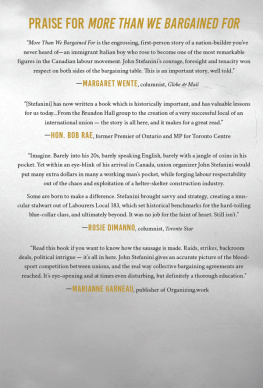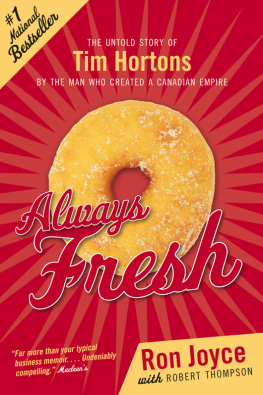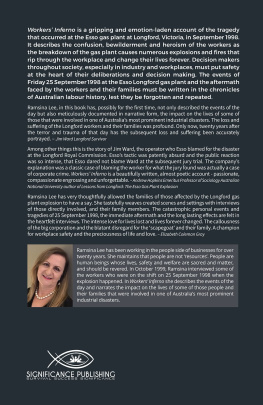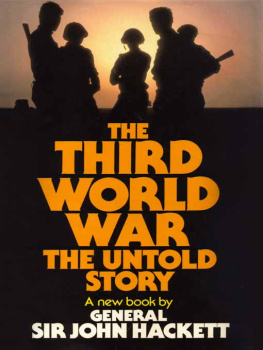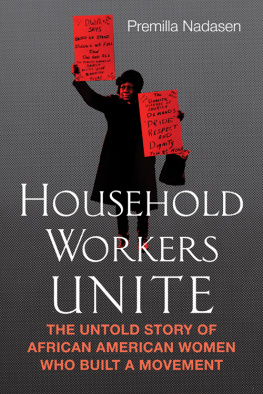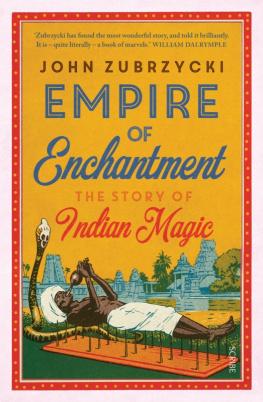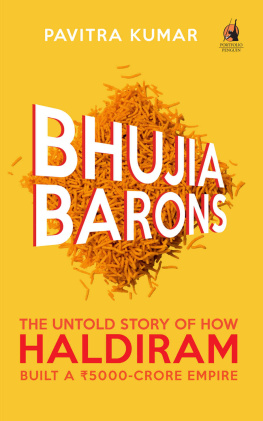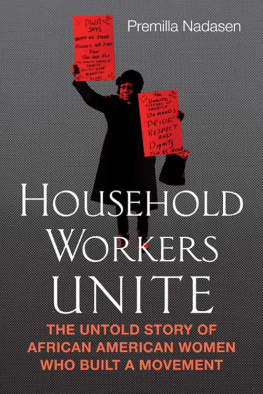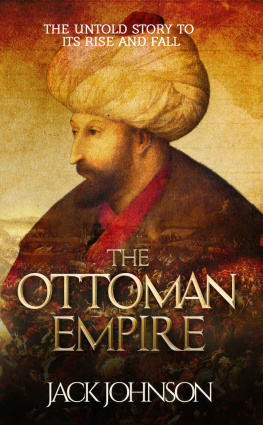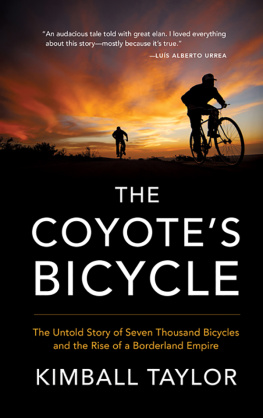MORE
THAN WE
BARGAINED
FOR

Sutherland House
416 Moore Ave., Suite 205
Toronto, ON M4G 1C9
Copyright 2019 by John Stefanini
All rights reserved, including the right to reproduce this book or
portions thereof in any form whatsoever. For information on rights and
permissions or to request a special discount for bulk purchases, please
contact Sutherland House at
Sutherland House and logo are registered
trademarks of The Sutherland House Inc.
First hardcover edition, September 2019
If you are interested in inviting one of our authors to a live event or
media appearance, please contact
and visit our website at sutherlandhousebooks.com for more
information about our authors and their schedules.
Manufactured in Canada
Cover designed by Lena Yang
Cover photograph courtesy of Kenneth Whyte
Book composed by Karl Hunt
Library and Archives Canada Cataloguing in Publication
Title: More than we bargained for: an untold story of exploitation,
redemption, and the men who built a workers empire / John Stefanini.
Names: Stefanini, Giancarlo, 1940-author.
Identifiers: Canadiana 20190082178 | ISBN 9781999439538 (hardcover)
Subjects: LCSH: Stefanini, Giancarlo, 1940- | LCSH: Labor leadersCanada
Biography. | LCSH: Laborers International Union of North America.
Local 183Officials and employeesBiography. | LCSH: Labor unions
CanadaHistory20th century. | CSH: Italian Canadians
Biography. | LCGFT: Autobiographies.
Classification: LCC HD6525.S74 A3 2019 | DDC 331.88092dc23
ISBN 978-1-9994395-3-8
DEDICATION
This book is for the multitude of hard-working immigrants who came to Canada from their devastated countries after the Second World War.
They received no government assistance, paid for their own doctors and medical care, and bought their own homes. While many were exploited and discriminated against, they were still grateful to Canada and to Canadians for giving them a second chance in life. They had limited education and could not speak either of Canadas official languages, yet with their sweat, sacrifices, and know-how they built great cities and started untold numbers of manufacturing businesses and commercial enterprises. They enriched this country culturally and economically and created the prosperity necessary to establish the great social benefits we all take for granted today.
I wrote this book to tell the story of how this generation of immigrants built the foundations of the construction-business labour unions in Toronto, and to describe the enormous impact our movement has had on Canada and its economy.
NOTHING LEFT
FOR ME IN ITALY
W hen I immigrated to Canada in 1959, it was not without assistance. I was fortunate to have family already in Toronto. Thanks to my brother, Sergio, and my sister, Franca, my family sponsors, I was granted a visa. Sergio had been in Toronto for ten years and had prospered as a modest builder of homes. Franca arrived a few years before me and had a job at a bank.
I was born in 1940 in Polcenigo, in the province of Pordenone, part of the Friuli-Venezia Giulia region of Italy. My mother, Anna, was widowed at twenty-one. With no money and a lien on her property, she had to leave my older brother, Sergio, in Polcenigo to work as a domestic in Como. She later moved to Rome where she met my father. My sister, Franca, and I were born and for a time we lived in Rome where my father ran a restaurant. Unfortunately, the restaurant went broke and we moved back to Friuli just before I decided to come to Canada.
Rome is very much my home, as much as Polcenigo, but I was driven to Toronto at age eighteen by the success stories of Sergio and Franca. I saw North America as the veritable promised land. With their stories in my head, I applied for a visa at the first opportunity and when I got the instructions to report for a medical checkup at the Canadian Embassy in Rome I was on cloud nine. Truth be told, Canada was just a fuzzy place on the map for me, as it was for most Italians. In our minds, it was simply a part of North America and easily confused with the United States. We all know the difference now but Canada was a young country back then with a just-emerging identity forged in two world wars in which it had fought on behalf of the British Empire.
After my checkup, I went north to the small city of Sacile, which is the main station for the American air base in Aviano, in Pordenone province, known as the Garden of Serenissima, or the Republic of Venice, to say goodbye to my mother. I was buzzing with excitement when I got on that train to begin the longest journey of my life, a grand adventure of which I had dreamed for a long time.
I rode the train west to Genova, Christopher Columbuss birthplace, and boarded the SS Irpinia, a transatlantic ship built in 1929. It had seen better days. Operated by the famed Grimaldi family, it specialized in carrying immigrants to their new homes, which in my case was Montreal, one of the main ports of entry for passenger ships back then.
I was lucky because the SS Irpinia was small enough to slip up the St. Lawrence River. Bigger transatlantic liners carrying immigrants could not do so. They had to dock in Halifax. Passengers in Halifax were then transferred onto trains specially fitted with uncomfortable wooden seats for the forty-eight-hour journey to Toronto. I heard many stories from Italians and other immigrants of that exhausting trip, first battling seasickness and then the jarring train ride.
For those arriving in Canada in winter, it was a real shock. Not only was the sea rougher in the winter but then they had to break the ice forming on the windowpanes just to see out of the train, and even then there were days when they saw nothing but snow. It was a far cry from sunny Italy. Little wonder these trains were dubbed carri bestiami, or cattle wagons. The traveling conditions were awful. Often there were not enough seats for the immigrants on the train. Their food was bought at the port grocery store before boarding. It consisted mainly of white sliced bread, nothing like the good homemade Italian bread to which they were accustomed.
But I was entering the country at Montreal, and after a ten-day crossing, the SS Irpinia arrived on a beautiful August day in 1959. I could not have been happier. I felt like celebrating. Thirsty for a cold beer, I bought one with the few dollars in my pocket, not thinking for a minute that you might have to be a certain age (twenty-one) to drink alcohol. I was eighteen and I got away with it. Of course, in Europe we start drinking legally at a much younger age.
Montreal seemed vaguely familiar as I explored it. I visited its Cathdral Marie-Reine-du-Monde and I noted to myself that it looked similar to Saint Peters Basilica in Rome. As I admired it, I stopped to chat with a priest and in quite fair Italian he confirmed my impression. It was a quarter-scale replica of the Basilica, which, of course, I had visited often. In the afternoon I took the train to Toronto. Unlike those trains from Nova Scotia, its carriages had comfortable seats and air conditioning and it was a lovely journey. I arrived in Toronto at around 9:30 p.m. and hurried out of the station hoping to meet my family.
No one came to greet me so I grabbed a taxi and in rather poor English gave the driver the address of my uncles home on Perth Avenue in west Toronto where my brother and sister, Sergio and Franca, lived. My attempt at English must have been impressive because the taxi driver got into a conversation with me, convinced I was fluent. I played along, limiting my responses to a yes from time to time.
Next page
